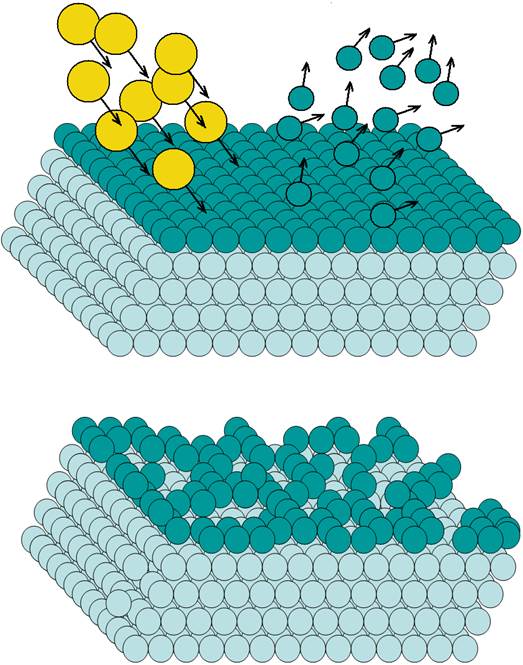Ion bombardment (aka sputtering, ion milling, etching)
The bulk of my early work was focused on using IPES as a diagnostic tool to study ion bombardment of crystalline nickel. When a crew of workers “resurfaces” an old building, they often use sandblasting. This is when sand and water are blasted at a surface to remove the dirt (and some of the building!) to reveal a clean surface. Shrink the process down and you’ve got ion bombardment. If a beam of ions is accelerated at a sample, the same thing happens as with the old building. All the dirt (random atoms and molecules) is blasted off the surface along with some of the underlying sample. When done, the surface is rough but clean, as illustrated below.

Heating the sample up, usually to about half the bulk melting point, allows the atoms of the surface to move about. When the surface atoms are mobile, they can align in accordance with the underlying structure. When it cools off, we have as near an approximation to the infinite lattice as we can get, and this is a process used as the first step to a great many surface physics experiments as well as materials fabrication techniques.
Once I’ve got a clean surface, I am able to use IPES to observe a surface electronic state. It exists because the lattice stops at the surface, but we still assume the lattice is otherwise perfect. A lot of surface physicists study the many imperfections in real lattices and how they can inform modifications to our theoretical understanding. I’m interested in vacancies, which are point defects where an atom has been removed from the lattice. How much of the crystal lattice must be in tact for the surface state to exist? What does this mean for other properties condensed matter theory has predicted? Can a finite replacement of the infinite lattice assumption help?